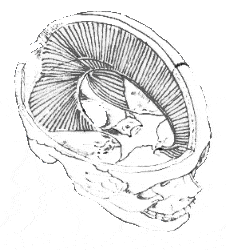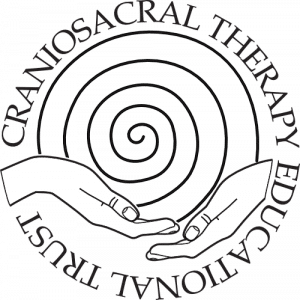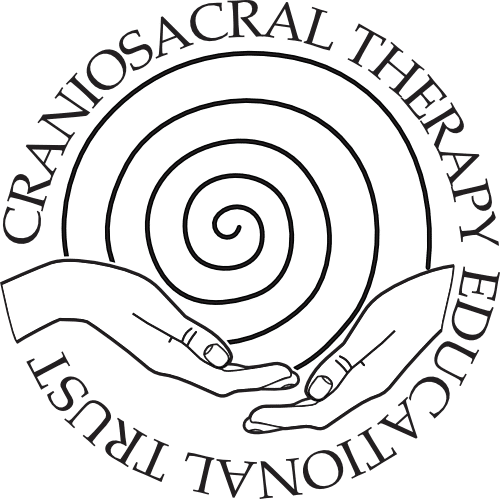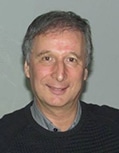Reading, Videos and Podcasts
Introduction to Biodynamic Craniosacral Therapy
by Michael Kern D.O., B.C.S.T., A.B.D., N.D.
“Worms will not eat living wood where the vital sap is flowing; rust will not hinder the opening of a gate when the hinges are used each day. Movement gives health and life. Stagnation brings disease and death.”
– proverb in traditional Chinese Medicine
Life and motion
Life expresses itself as motion. At a deep level of our physiological functioning all healthy, living tissues subtly ‘breathe’ with the motion of life – a phenomenon that produces rhythmic impulses which can be palpated by sensitive hands.
The presence of these subtle rhythms in the body was discovered by osteopath Dr William Sutherland over 100 years ago after a remarkable insight he had while examining the specialised articulations of cranial bones. Contrary to popular belief Dr Sutherland realised that cranial sutures are, in fact, designed to express small degrees of motion. He undertook many years of research during which he demonstrated the existence of this motion and eventually concluded it is produced by the body’s inherent life force, which he referred to as the Breath of Life.
Furthermore, Dr Sutherland discovered that the motion of cranial bones is just one element in a system of subtle rhythms that involves the whole body. He identified the particular importance of the rhythmic motion of tissues and fluids at the core of the body in this system – including cerebrospinal fluid (the ‘sap in the tree’), the central nervous system, the membranes that surround and partition the central nervous system, the cranial bones and the sacrum.
‘The Breath of Life’
Deeper investigation has revealed that the Breath of Life produces not one, but a series of subtle rhythms in the body. At least three rhythms have been identified, each having a different rate and producing rhythms within rhythms. These three ‘tides’ are referred to as:
i) the cranial rhythmic impulse (CRI) – a relatively superficial rhythm expressed as a slight rocking of all parts of the body in response to deeper forces acting upon them. The CRI has an average rate of 8-12 cycles per minute.
ii) the mid-tide – a tidal rhythm that has a slower rate of approximately 2.5 cycles per minute. This subtle inner breathing of cells and tissues is an expression of the deeper ordering forces of the Breath of Life in the body. Dr Sutherland realised the important role played by fluids in the body (particularly cerebrospinal fluid) in helping to disseminate these ordering forces throughout our physiology.
iii) the long tide – a deep and slow rhythmic impulse expressed at the rate of about once every 100 seconds. The long tide is seen to carry an essential ‘ordering matrix’ into the body, as health and balance naturally become restored whenever it is able to manifest. The long tide is the first stirring of life and motion as the rhythms of the Breath of Life emerge from a deeper ground of stillness at the core of our being.
Essential ordering forces
In the biodynamic approach of craniosacral work the subtle rhythms produced by the Breath of Life are regarded as fundamental expressions of our health and vitality. The ordering matrix carried into the body within these rhythms acts as a blueprint for health which is present from the time of our early embryological development. This blueprint contains the knowledge to create a whole human being and it is the fundamental factor that maintains balance in our form and function throughout our lives. Thus, the ability of cells and tissues to express their ‘primary respiratory motion’ is a critical factor in determining our state of health – when these rhythms are expressed in fullness and balance, our blueprint for health is able to manifest and a sense of wholeness and well-being automatically follows.
Inertial patterning
During the course of our lives our bodies become patterned, shaped and conditioned according to how we can deal with stresses or traumas. If we are unable to dissipate the effect of these experiences, they become locked in the body as sites of inertia – until a time that we become able to process and resolve them. These sites of inertia create distortions in the natural rhythmical movements of the Breath of Life, leading to a sense of fragmentation and hindering the ability of our essential health to manifest at a cellular level.
Due to an accumulation of these stresses, tissues can become imprinted with the memory of unresolved experiences and so act like video tape which may keep replaying whenever stimulated. We may then cycle around in repeated patterns of physiological and psychological behaviour, as our responses to situations become conditioned by experiences already held within us. These patterns are commonly caused by factors such as physical injuries, emotional and psychological stresses, birth trauma and toxicity.
A gentle facilitation
The emphasis in Biodynamic Craniosacral Therapy is to help resolve the trapped forces that underlie and govern patterns of disease and fragmentation in both body and mind. This involves the practitioner developing finely-tuned skills of palpation and perception to sense the body’s subtle rhythms and any patterns of inertia or congestion. Through the development of these skills the practitioner can read the story of the body, identify places where issues are held and then follow the natural priorities for healing as directed by the patient’s physiology.
The intention of treatment is to facilitate the expression of the Breath of Life and so enhance the body’s own self-healing and self-regulating capabilities. This is done in a non-invasive way with hands-on contacts, as the practitioner subtly and gently encourages conditions that support the reemergence of ‘primary respiratory motion’. Furthermore, the practitioner’s deep and clear quality of presence can become a reflective mirror for the patient and an invaluable prompt for their potential for change.
A holistic approach
Biodynamic Craniosacral Therapy takes a whole-person approach to healing and the inter-connections of mind, body and spirit are deeply acknowledged. It is an effective form of treatment for a wide range of illnesses helping to create the optimal conditions for health, encouraging vitality and facilitating a sense of well-being. It is suitable for people of all ages including babies, children and the elderly, and can be effective in acute or chronic cases.

– Dr Andrew Taylor Still


